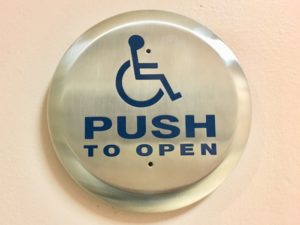Most buildings on Camosun’s Lansdowne campus are decently accessible. However, due to the age of the campus, there are a few buildings that have not been modernized. One such building is the Richmond House.
Not only is the building itself inaccessible, so are the services that are run within it, which include the Women’s Centre, the pride lounge, the main Camosun College Student Society office (you can also find them in the main floor of Fisher, though), and even the Nexus office.

Most of the services available to students at Camosun pride themselves on their availability to all students. This, of course, is rather ironic to some students, especially when they’re trying to access services they can’t.
Anyone who has been to the Richmond House may have noticed that there is actually a wheelchair access button on one of the exterior doors. While this was a valiant effort by Camosun, it doesn’t exactly help much. Getting inside the building isn’t the problem in this case. With its narrow hallways and equally narrow doorways, moving beyond the entryway is seemingly impossible.
While renovating a building in its entirety would be the solution in a perfect world, it’s not realistic. There may be another option, however, in making at least some of Richmond House’s services accessible.
With the Nursing program soon to be moving to the Interurban campus, some space may become available in the Wilna Thomas building. Wilna Thomas is newer and far more accessible for those with mobility concerns.
Although it is unclear what Camosun plans to do with the space vacated by the Nursing program, perhaps these options should be considered more closely.
While the college has done admirably in making do with creating accessible space within old buildings on the Lansdowne campus, there are still steps to be taken, and not just in the Richmond House.
Until recently, Ewing did not have access buttons on any of its first-floor entrances, even though there were ramps. To make matters worse, even if a student in a wheelchair managed to get into Ewing, they would have to contend with another set of doors—this time, heavy metal ones.
Although these are only two of the buildings on campus, each one of them has its quirks.
